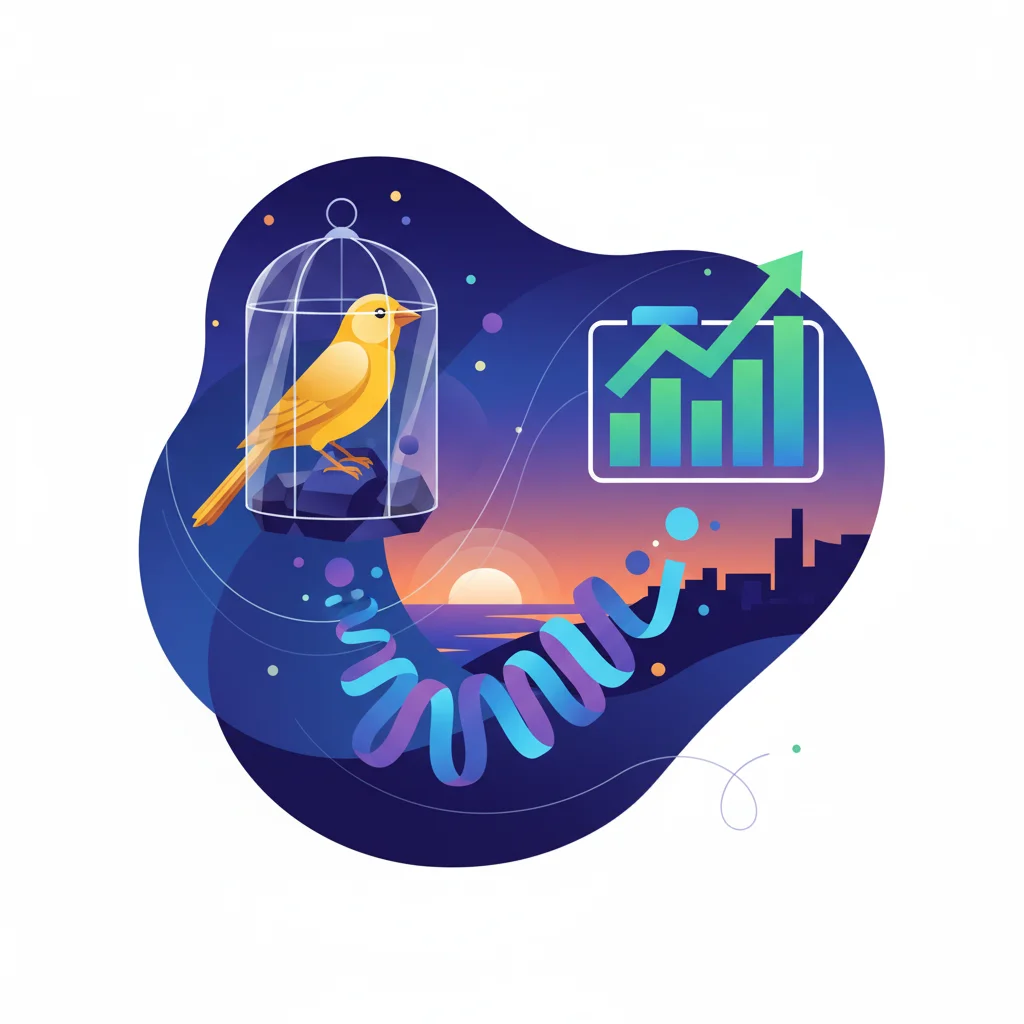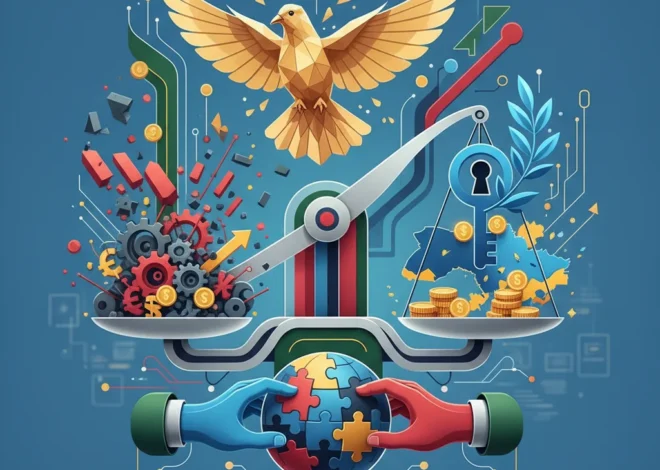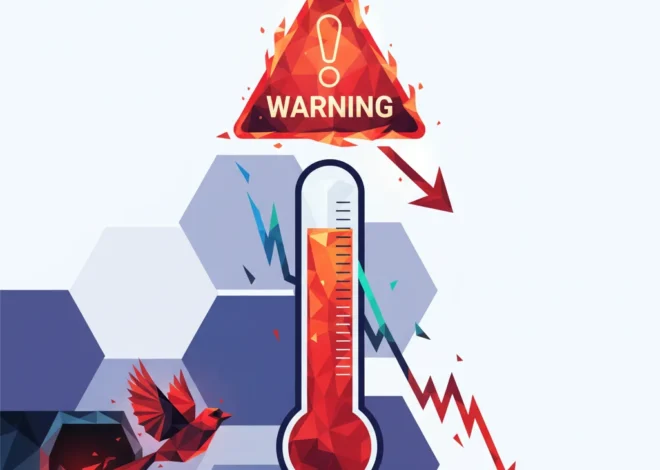
The Canary in the Coal Mine: What Foodbank Lines Tell Us About the Economy and Your Investment Portfolio
In Blackpool, a coastal town in the north of England, Lisa Parkinson volunteers at the Big Food Project. It’s a place she knows well, not just as a volunteer, but as a former recipient of its aid. She says the people who come through its doors today call the service a “lifesaver” (source). This single, powerful statement from a community foodbank is more than just a human-interest story; it’s a critical, real-time data point from the front lines of the global economy.
For investors, finance professionals, and business leaders, it’s tempting to focus on headline metrics: GDP growth, stock market indices, and corporate earnings reports. We build complex models and trading algorithms based on this high-level data. Yet, the most potent indicators of economic health—and future market volatility—often emerge not from financial statements, but from the lived experiences of people like Lisa and the communities they serve. The growing queues at foodbanks are a modern-day canary in the coal mine, signaling underlying systemic pressures that will inevitably ripple through the financial markets. Understanding this connection is no longer just a matter of social conscience; it’s a crucial component of sophisticated economic analysis and astute investment strategy.
From Food Lines to Financial Forecasts: Decoding a Leading Economic Indicator
In the world of economics, we distinguish between lagging and leading indicators. Lagging indicators, like official unemployment rates or GDP figures, tell us where the economy has been. They are historical records, confirmed long after the fact. Leading indicators, however, offer predictive insights, signaling where the economy is headed. While economists traditionally look to metrics like manufacturing orders or building permits, the reality is that food insecurity is one of the most immediate and accurate leading indicators of widespread financial distress.
Unlike official statistics that can take months to compile, the demand at a foodbank responds in real-time to economic shocks. A sudden interest rate hike by the central bank doesn’t just affect the bond market; within weeks, it translates into higher mortgage payments and credit card bills, squeezing household budgets and forcing more families to seek help. According to The Trussell Trust, a leading UK foodbank network, over 3.1 million emergency food parcels were distributed between April 2023 and March 2024, a staggering 94% increase over a five-year period (source). This isn’t just a statistic; it’s a direct measure of failing purchasing power and a clear signal of deep-seated economic fragility.
For the finance professional, this data is invaluable. It foretells a coming contraction in discretionary consumer spending, which will inevitably impact corporate earnings in sectors from retail and hospitality to entertainment and luxury goods. The stock market may be rallying on the back of tech sector optimism, but if a growing percentage of the population cannot afford basic necessities, a broader economic downturn is not a matter of ‘if’, but ‘when’. Ignoring these signals from the ground is akin to ignoring a smoke alarm because the fire hasn’t yet reached your room.
The Ripple Effect: How Main Street Hardship Hits Wall Street Valuations
The connection between community-level hardship and institutional investing is direct and measurable. When households face financial precarity, their behavior shifts predictably. This has profound implications for portfolio allocation and risk management.
First, there’s a clear rotation in consumer spending. Discretionary spending evaporates, while spending on essential goods—consumer staples—remains resilient or even increases as people stock up on non-perishables. An investor who tracks foodbank usage as a proxy for economic stress might rebalance their portfolio, reducing exposure to high-end retail and travel stocks while increasing positions in consumer staples, discount retailers, and healthcare.
Below is a simplified illustration of how consumer spending priorities shift during periods of economic distress, a trend directly indicated by rising foodbank demand.
| Spending Category | Behavior During Economic Stability | Behavior During Economic Distress | Implication for Investors |
|---|---|---|---|
| Consumer Staples (Groceries, Household Goods) | Stable, predictable spending | Spending consolidates; focus on value/private label brands | Defensive stocks (e.g., Procter & Gamble, Walmart) may show resilience. |
| Consumer Discretionary (Dining, Travel, Luxury) | Robust growth, high spending | Sharp and immediate contraction | High-risk exposure; potential for significant downturn in sector valuations. |
| Housing & Utilities | Stable, but sensitive to interest rates | Payments become a major strain; defaults may rise | Indicates potential stress in banking and real estate sectors (REITs). |
| Savings & Investing | Regular contributions to retirement/brokerage accounts | Contributions cease; withdrawals may occur | Reduced capital flow into the stock market from retail investors. |
Second, rising inequality and hardship create systemic risk. A society with a shrinking middle class and a growing number of people living on the edge is less resilient to economic shocks. This can lead to social and political instability, which is a significant, often under-priced, risk for the market. An economy where a large portion of the population is one paycheck away from needing a foodbank is not a healthy or stable economy, regardless of what the S&P 500 is doing.
Financial Technology and Banking: A Duty to Innovate?
The challenges highlighted by the rise of foodbanks also present a profound opportunity for the finance and technology sectors. The same ingenuity that powers high-frequency trading and decentralized finance can be harnessed to build a more inclusive and resilient economic infrastructure.
The field of financial technology, or fintech, is uniquely positioned to address these gaps. Innovations in this space are already providing critical lifelines:
- Earned Wage Access (EWA): Fintech platforms that allow employees to access their earned wages before the traditional payday can help prevent the spiral into high-interest payday loan debt that often leads people to a foodbank.
- Digital Banking and Micro-lending: For the unbanked or underbanked, fintech solutions can provide access to basic banking services, credit-building tools, and fair micro-loans, fostering financial stability.
- AI-Powered Financial Planning: Sophisticated apps can help low-income individuals with budgeting, identifying eligible social benefits, and navigating complex financial decisions, democratizing access to financial literacy.
Beyond fintech startups, the traditional banking sector has a critical role to play through its Corporate Social Responsibility (CSR) and ESG (Environmental, Social, and Governance) initiatives. Investing in community development financial institutions (CDFIs), supporting local non-profits like the Big Food Project, and developing products for low-income customers are not just acts of charity; they are investments in the stability of the entire economic ecosystem.
The Mamdani Effect: Why a Local Election Signals a Seismic Shift in Geopolitical Investing
Looking further ahead, even nascent technologies like blockchain hold potential. While often associated with speculative trading, the core principle of a transparent, immutable ledger could revolutionize charitable giving and supply chain management. Imagine a system where a donor could use blockchain to track their financial contribution all the way to the specific food parcel it purchased, ensuring transparency and efficiency in the third sector. As reported by non-profit consortiums exploring this technology, blockchain could enhance trust and effectiveness in humanitarian aid delivery (source), a concept that could one day benefit organizations on the front lines of poverty.
The New Bottom Line: Investing in a More Resilient Economy
The conversation ultimately leads to the evolution of investing itself. The rise of ESG investing is a direct response to the understanding that long-term corporate performance cannot be divorced from its impact on the environment and society. The “S” in ESG is precisely about the issues embodied by Lisa Parkinson’s story: community health, employee well-being, and economic equality.
Companies that pay living wages, provide stable employment, and contribute positively to their communities are not just “doing good”; they are building a more loyal customer base, a more motivated workforce, and a more stable operating environment. They are mitigating the systemic risks associated with inequality. For an investor, these are not soft metrics. They are indicators of superior management and long-term resilience. As global investment firms increasingly integrate ESG criteria, companies with poor social track records will face higher costs of capital and greater scrutiny from the market.
The Great Legal Shake-Up: Is Private Equity About to Buy into Big Law?
The story of one volunteer at a foodbank in Blackpool is a powerful reminder that the economy is not an abstract concept. It is a human system. For those of us in the world of finance, economics, and business, our challenge is to build models and strategies that reflect this reality. By paying attention to the canaries in the coal mine, we can not only become more successful investors but also contribute to building an economy that doesn’t just look good on a stock chart, but one that is truly a “lifesaver” for all its participants.


